|
SLAVE TRADE ROOM
This page is far from complete;
however, it is up for general testing and comments. There was not active
slave markets in the Keys, only the secondary markets between citizens.
There was however, captured slave ships, called slavers, brought into the
port of Key West for adjudication.
Possession of slaves was legal, but in
the early 1800's the slave trade was banned by the major countries. Off
of Key Largo the British ship H.M.S. Nimble chased the Spanish ship
Guerrero and they both ran into the reef near Carysfort Reef on
December 19, 1827. This will be the focus of this page when completed.
Until then a few images of artifacts are all that is available.
Thanks, Jerry Wilkinson
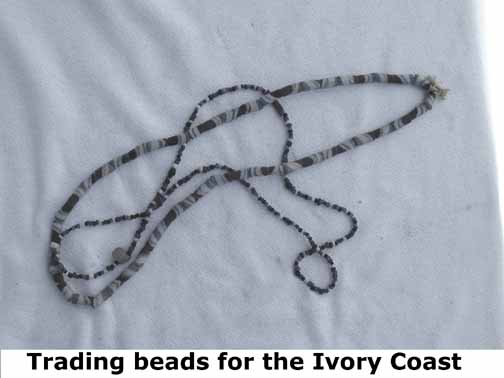
Beads have been known as a popular trading
object with many natives. This was true in Africa also.
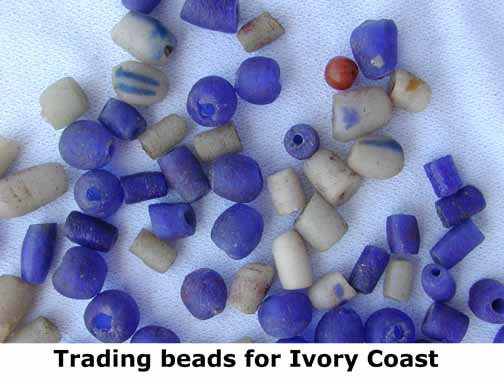
Shown here is a handful of larger beads. These are the size of marbles.
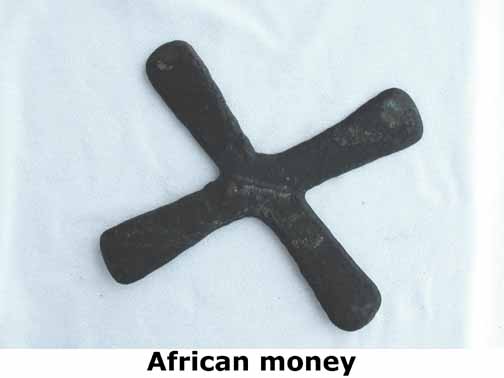
The African tribes had
their own system of trading between themselves before whiteman. One system
was sort of like our money. Pictured above is a solid copper piece from
the Katanga Providence. To my knowledge it is not at all related to the
slave or European trade.
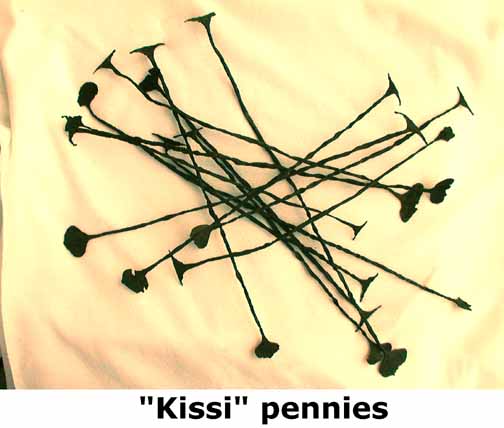
One of the smallest valued trading items used
by the Europeans with the African tribes was the "Kissi penny." I am not
certain of the derivation of this name. It was made of iron and was about
13 inches long. A group found in an African Chief's grave is shown above.
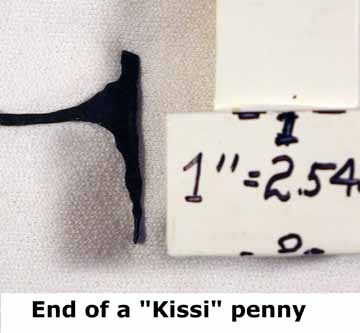
Above is shown the detail of one end and below is the the other
end.
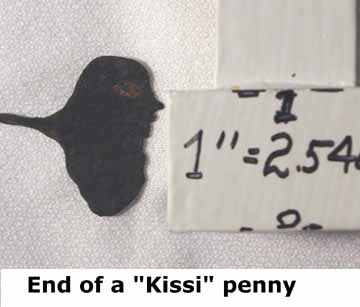
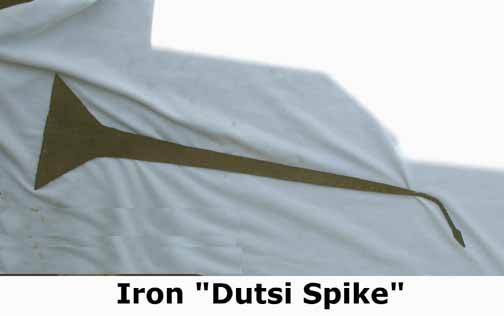
Of greater value was the "Dutsi Spike."
It was also made of iron and similar in shape to the Kissi penny, but pounded
flat and much, much larger. The one above is about 30 inches long and is
flat.
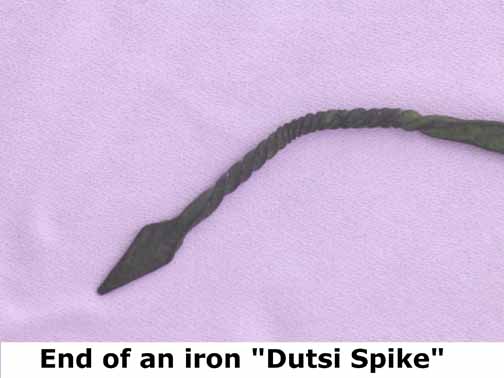
The pointed end is very twisted.
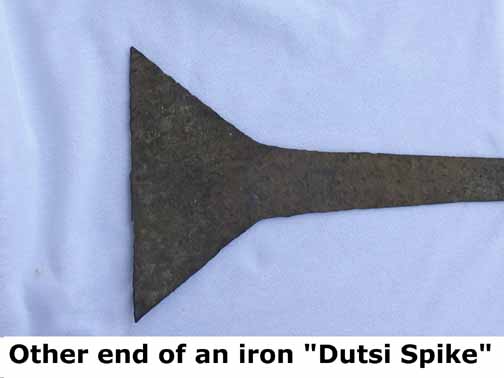
The triangular end is flat and about 6 inches across. Therefore.
the Dutsi Spike is very much larger than the Kissi penny.
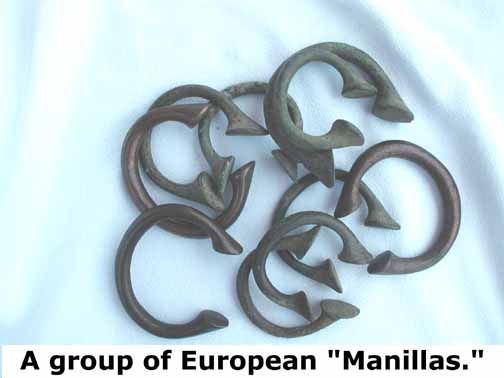
It appears that the "manilla", or bracelet,
was the item used to trade for a human being. Manillas were made by the
African tribes for their own use, but were usually much more ornate than
these. Some exhibited considerable art form. The above are European made
manillas were found in an African Chief's grave and are made of bronze.
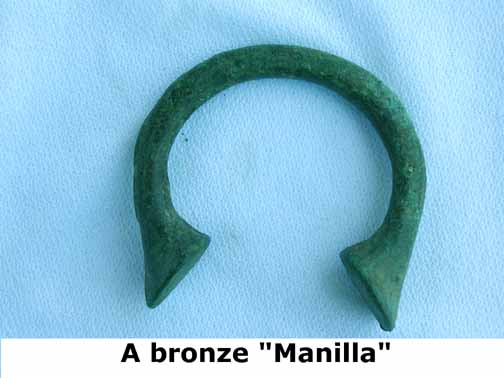
A close up view of a European manilla. They are generally about
2 1/4 inches across the opening for the wrist and slightly oval.
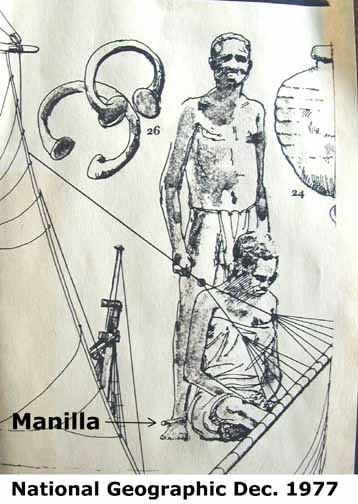
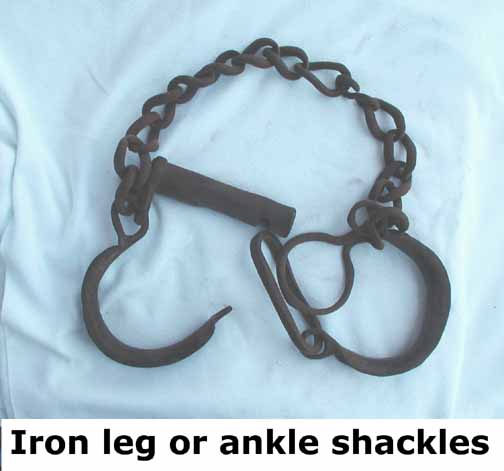
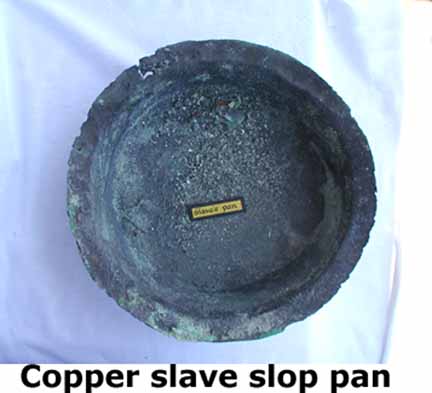
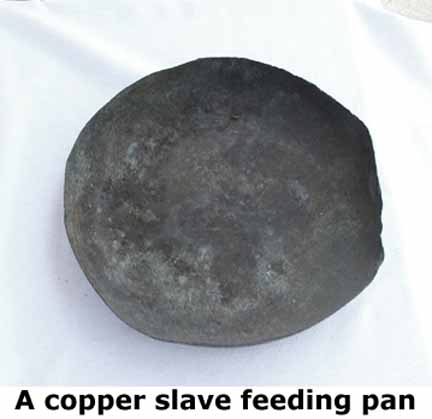
-End to test data -
|